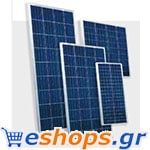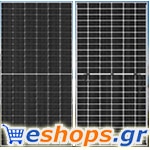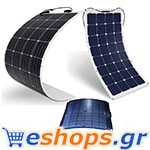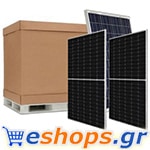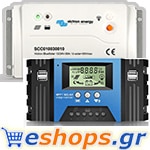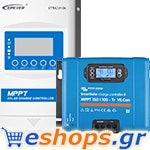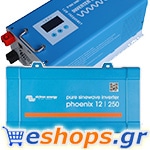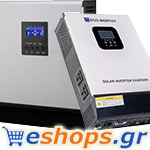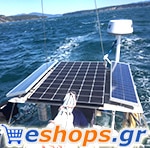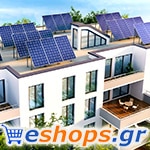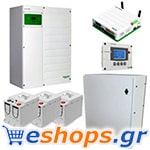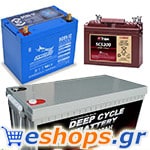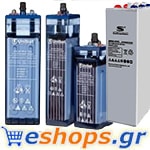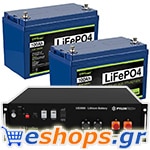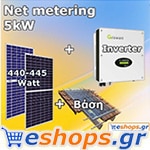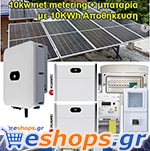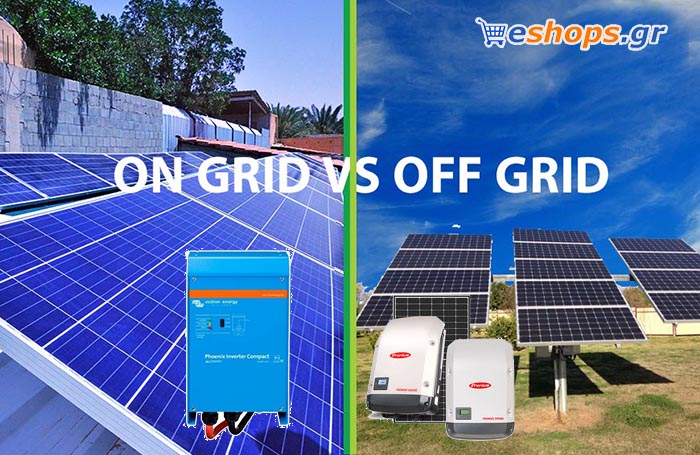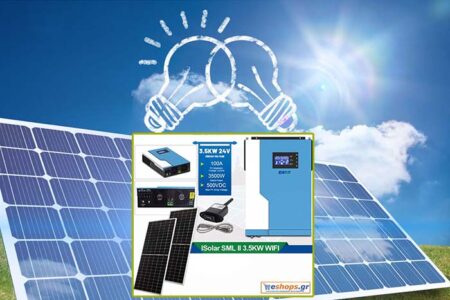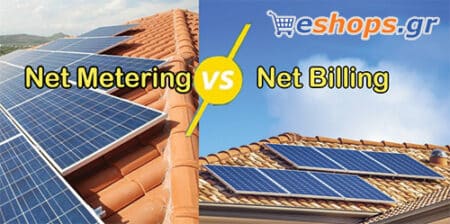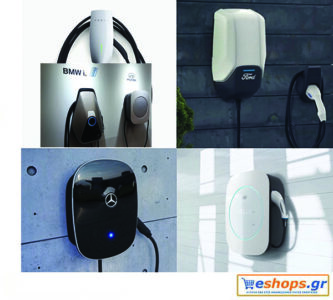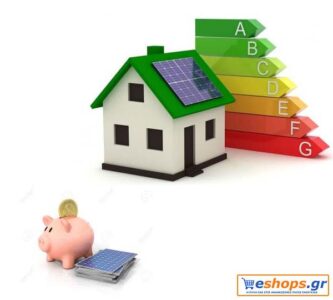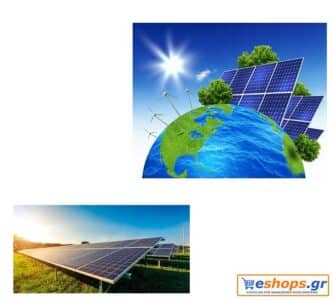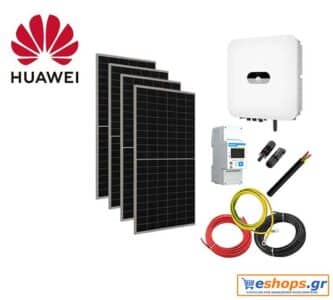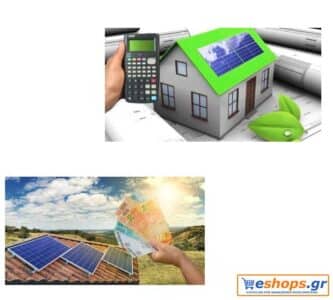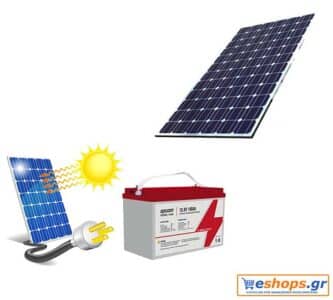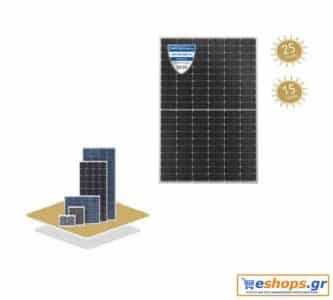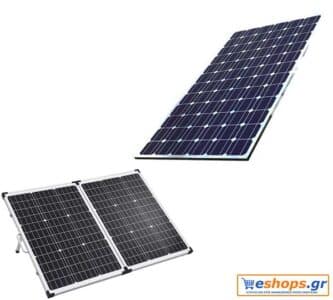Photovoltaics – Save Energy.
Information about stand-alone, off-grid systems
Net metering, net billing
Photovoltaics – Theory – Practice: Enter the world of innovative energy solutions with photovoltaics – a sustainable and environmentally friendly way to fuel your life. Harnessing the power of sunlight, photovoltaic systems offer a promising avenue for energy conservation and carbon footprint reduction. Let's dive deeper into the realm of photovoltaics and explore how these systems can revolutionize the way we consume and generate electricity.
What are Photovoltaics?
Photovoltaics, often referred to as solar photovoltaics, is a technology that transforms the Sun light into electricity through the use of solar panels. These panels consist of multiple photovoltaic cells that capture sunlight and generate direct current (DC) electricity. The process involves photons from the sun striking electrons free of atoms in the semiconductor material inside the cells.
When sunlight hits the cells, it creates a electric field in the layers, causing electricity to flow. This generated electricity can then be used to power homes, businesses or even entire communities. Photovoltaic systems come in a variety of sizes – from small residential installations to large-scale solar parks that contribute energy to the grid.
One of the key advantages of photovoltaics is their renewable nature. Sunlight is an abundant resource that can be harnessed without depleting finite fossil fuels. Using this clean source of energy, we can reduce greenhouse gas emissions and move towards a more sustainable future.
The benefits of using photovoltaic systems
Η transition to photovoltaic systems offers numerous benefits for both the environment and homeowners. One of the main advantages is the reduction of bills electricity creating your own clean energy from sunlight. This leads to long-term savings in utility costs while reducing dependence on fossil fuels.
Furthermore, photovoltaic systems contribute in reducing carbon emissions, contributing to a more sustainable future. By harnessing solar energy, you can significantly reduce your carbon footprint and play a role in climate change mitigation. Additionally, these systems require minimal maintenance and have a long lifespan, providing a reliable source of renewable energy for years to come.
Furthermore, the photovoltaic installation panels can increase the value of your property. The houses that are equipped with systems solar energy systems are often more attractive to buyers due to lower operating costs and environmental appeal. The adoption of this environmentally friendly technology not only does it benefit you financially, but it positively impacts the planet we call home.
Understanding stand-alone versus off-grid systems
When it comes to photovoltaic systems, understanding the difference between autonomous and out of network settings it is of vital importance. Autonomous systems are usually connected to a battery storage unit, allowing it energy storage during times when sunlight is not available. This setup is ideal for remote locations where access to the main power grid is limited.
From the other side, the systems outside the operator's networkn independent of any utility network connection. They rely solely on solar panels and batteries to produce and electricity storages. This type of system provides complete energy independence, but requires careful planning and maintenance to ensure a continuous power supply.
Both the autonomous and the off-grid systems offer unique advantages depending on your specific needs. Stand-alone systems are more flexible in terms of scalability, while off-grid systems provide complete autonomy from external energy sources.
Considering factors such as location, the energy requirements, budget constraints, and maintenance capabilities will help you determine which system best suits your solar energy efficiency needs.
Net Metering: An Introduction
Net metering is one key concept in the world of photovoltaics, offering an innovative way for solar users to interact with the grid. Essentially, it allows people who generate their own electricity from solar panels to feed excess energy back into the grid.
In this way, users can earn credits on their utility bills or even receive payments for the excess energy they contribute. This creates a more symbiotic relationship between consumers and utilities, while e.gstreams sustainable energy practices.
The beauty of net metering is its simplicity – it enables homeowners and businesses to take control of energy production and consumption. Rather than letting unused solar energy go to waste, net metering ensures that every kilowatt-hour generated is put to good use.
As renewable energy sources like solar continue to gain traction, understanding concepts like net metering is becoming increasingly important for those looking to reduce their carbon footprint and save on electricity costs.
How Net Metering works with Photovoltaic Systems
When it comes to photovoltaic systems, net metering plays a key role in maximizing energy efficiency.
Net metering allows you to connect your solar panels to the grid, allowing you to receive credits for any excess electricity produced by your system. This means that at times when your panels produce more power than you need, the excess is sent back to the grid.
Conversely, on days when your energy consumption exceeds what your panels can produce (such as at night or on cloudy days), you can draw electricity from the grid without incurring additional costs thanks to these credits accumulated through net metering.
This two-way flow of electricity not only helps reduce your carbon footprint, but also saves money on your utility bills. Net metering essentially ensures that you get the most out of your PV system while making a positive contribution to sustainable energy practices.
Factors to consider when choosing a photovoltaic system
When considering a PV system for your energy needs, there are several factors to keep in mind. The first factor is the size of the system you need based on power consumption and available space for installation. It is important to assess how much electricity you use daily to determine the appropriate solar panel capacity.
Another important consideration is the location and orientation of your property. Make sure your roof or lot gets enough exposure to sunlight during the day to maximize energy production from the PV system. Shading from nearby trees or buildings can significantly affect its effectiveness.
Additionally, consider the type of solar panels you want – monocrystalline, polycrystalline or thin film. Each type has its advantages and costs that should align with your budget and performance expectations. Don't forget warranties, maintenance requirements and possible rebates or incentives available in your area when deciding which solar system to choose.
conclusion
Integrating PV systems into your energy strategy can help you save money, reduce your carbon footprint and gain more independence from the grid. Whether you choose a stand-alone system, an off-grid installation or take advantage of net metering options, there are many benefits to be enjoyed with PV. Remember to consider factors such as location, energy needs and budget when choosing the right system for your home or business. Embrace solar power today and join the movement for a sustainable future powered by the sun!
Say goodbye to high electricity bills with a standalone photovoltaic system for your home
Tired of seeing high electricity bills month after month? It's time to take control of your energy consumption and say goodbye to those high costs for good. With a stand alone PV system for your home, you can harness the power of the sun to generate clean and sustainable energy right from your own backyard. Say hello to lower bills and a brighter future with this innovative solution that takes care of your energy needs. Let's see how this technology works and how it can benefit you and your wallet.
Introduction to Photovoltaic Autonomous Systems
Introduction to autonomous photovoltaic systems:
In recent years, there has been a growing demand for renewable energy sources as people become more aware of the effects of traditional energy sources on the environment. One such source is solar energy, which can be harnessed through photovoltaic (PV) systems. These systems use solar panels to convert sunlight into electricity, providing a sustainable and cost-effective solution for powering homes and businesses.
A stand-alone PV system refers to an autonomous system that operates independently of the main power grid. It uses batteries to store excess electricity generated during the day, which can then be used at night or during periods of low sunlight. This makes it an ideal choice for remote areas without grid access or for those looking to reduce their reliance on traditional energy sources.
One of the major advantages of a stand-alone PV system is its ability to significantly reduce electricity bills. By generating your own electricity, you no longer have to rely solely on expensive utility companies for your energy needs. This means you can save hundreds or even thousands of dollars a year on your electricity bills.
In addition, installing a stand-alone photovoltaic system also allows homeowners to take advantage of government incentives and tax credits aimed at promoting the use of renewable energy sources. These financial incentives can help offset some of the initial costs associated with purchasing and installing a PV system, making it an even more attractive option.
Another advantage of stand-alone photovoltaic systems is their reliability and durability. Unlike fossil fuels which are finite resources, sunlight is an abundant resource that will never run out. This means that once you install a photovoltaic system, you will have access to free and clean energy for many years to come.
Additionally, these systems require minimal maintenance as they have no moving parts that can wear out over time. With proper installation and regular cleaning, a standalone PV system can last up to 25 years or more with little degradation in performance.
Stand-alone photovoltaic systems are a sustainable and cost-effective solution for powering your home. With the potential to significantly lower electricity bills, take advantage of government incentives and provide reliable power for years to come, it's no wonder more and more homeowners are making the switch to solar. In the next section, we will explore the components of a stand-alone PV system in more detail.
How do autonomous photovoltaic systems work?
Standalone PV systems, also known as off-grid solar systems, are becoming increasingly popular with homeowners looking to lower their electric bills and become more self-sufficient in energy consumption. But how do these systems actually work?
At the core of a stand-alone photovoltaic system are solar panels, which consist of photovoltaic cells that convert sunlight into direct current (DC) electricity. These panels are usually installed on the roof of a house or in an open space where they can get maximum exposure to sunlight.
The direct current power generated by the solar panels then flows to an inverter, which converts it into alternating current (AC) electricity – the type of power used by most household appliances. This AC power is then sent to a charge controller, which regulates and optimizes its flow to the batteries.
Batteries play a critical role in a stand-alone PV system as they store excess energy generated during peak hours of the sun for use when sunlight is not available. This means that even on cloudy days or at night, you can access the electricity generated by your solar panels.
To ensure battery performance and longevity, they must be sized appropriately for your household's energy needs and well maintained. Most modern stand-alone PV systems use advanced lithium-ion batteries that have a longer life and require less maintenance compared to traditional lead-acid batteries.
In addition to storing excess energy for future use, some stand-alone PV systems may also include backup generators for emergencies or to supplement periods of low sunlight.
A key component of any off-grid solar system is the charge controller mentioned earlier. This device ensures that the proper amount of charging voltage and amperage is supplied from the solar panels to the batteries without overcharging them. It also protects against battery discharge during periods when little or no sun is available.
We come to one of the most important parts of an autonomous photovoltaic system – the inverter. As mentioned earlier, this device converts the DC electricity from the solar panels into usable AC electricity. But it also plays a critical role in managing and regulating the flow of energy within the system to prevent overload and damage.
Standalone PV systems work by harnessing sunlight through solar panels, converting it into usable electricity with an inverter, storing excess energy in batteries, and using charge controllers to optimize and regulate the flow of energy. These systems are a great way to reduce your reliance on traditional grid power and lower your monthly electricity bills while reducing your carbon footprint.
Benefits of installing a standalone photovoltaic system for your home
Installing a standalone photovoltaic system for your home has many advantages. Not only does it provide you with clean and renewable energy, it also helps save money on your electricity bills in the long run. Here are some of the key benefits of installing a standalone PV system for your home.
1. Lower Electricity Bills: One of the major benefits of installing a standalone PV system is that it significantly reduces electricity bills. By harnessing solar energy, you can generate your own electricity and reduce your dependence on expensive power supplied by the grid. This translates into significant savings on utility bills, especially in the long run.
2. Environment Friendly: Using solar energy is extremely beneficial for the environment as it is a clean and renewable source of energy. Unlike traditional fossil fuel-based electricity generation methods that emit harmful pollutants into the atmosphere, solar panels produce no emissions or pollutants during operation. By switching to a standalone PV system, you reduce your carbon footprint and contribute to a greener planet.
3. Increased property value: Installing a stand-alone photovoltaic system can significantly increase the value of your property. As more and more people become environmentally conscious and look for sustainable homes, installing a solar panel system can be an attractive selling point to potential buyers.
4. Energy Independence: Another benefit of having a standalone PV system is that it gives you energy independence. You no longer need to rely on external sources for your electricity supply as you generate your own by converting sunlight into energy through photovoltaic cells installed on rooftops or ground systems.
5. Trackable Energy Savings: With traditional grid-tied systems where excess power is fed back into the grid, tracking energy savings can be difficult due to varying utility rates and policies. However, with standalone systems, all of the power generated by the solar panels goes directly to power devices within the home. This makes it much easier to track energy savings and allows for better budgeting.
Installing a stand-alone PV system for your home has many benefits, including lower electricity bills, environmental friendliness, increased property value, energy independence and trackable energy savings. Investing in solar energy not only benefits you financially, but also contributes to a sustainable future for generations to come.
Types of Photovoltaic Autonomous Systems
Standalone PV systems, also known as off-grid solar systems, are a great alternative for households looking to reduce their reliance on traditional electricity sources. These systems operate independently of the grid and can provide a reliable and renewable energy source for your home. There are several types of stand-alone PV systems available on the market today, each with their own unique features and benefits.
1. Battery-based systems: The
battery-based stand-alone PV systems are the most common type used in homes. They consist of solar panels that convert sunlight into electricity, which is then stored in batteries for future use. These systems have a battery bank that allows you to store excess energy generated during the day and use it at night or during cloudy days.
2. Hybrid systems:
Standalone hybrid PV systems combine both battery storage and another power source, such as a diesel generator or wind turbine. This type of system offers greater reliability as it can switch between different power sources depending on weather conditions or power demand.
3. AC coupling systems:
AC-coupled stand-alone PV systems have gained popularity in recent years due to their flexibility and efficiency. In this system, the solar panels feed directly into an inverter that converts the DC power from the panels into AC power for immediate use or storage in batteries.
4. DC coupling systems:
Stand-alone DC-coupled PV systems are similar to AC-coupled systems, but differ in how they connect to the grid. In this system, solar panels charge a central battery bank through a charge controller before sending electricity back to your home through an inverter.
5. Grid-tied systems with backup batteries:
This type of system combines traditional grid-tied technology with battery backup capabilities, giving homeowners cost savings from using renewable energy sources and peace of mind knowing they have backup power during vacations.
Choosing the type of off-grid solar system that is best for your home depends on a number of factors such as your energy needs, location and budget. It is essential to consult with a professional solar installer to determine which system would be most suitable for your particular situation.
Off-grid solar systems offer an efficient and sustainable way to power your home while reducing your electricity bills. With many options available, homeowners can choose a system that best suits their needs and take control of their energy consumption. Say goodbye to high electricity bills and hello to clean and renewable energy with a standalone photovoltaic system for your home.
Factors to consider before installing a stand-alone PV system
Installing a stand-alone PV system can be a great way to lower your electricity bills and become more self-sufficient. However, before you decide to install one, there are some important factors to consider. Here are some key things to think about before investing in a standalone PV system for your home.
1. Location and availability of sunlight: The first thing to consider is the location of your home and the amount of sunlight it receives. A standalone PV system requires direct sunlight to produce electricity, so if your home is surrounded by tall buildings or trees that block the sun, then this may not be the best option for you. It is important to assess whether your home gets enough sunlight during the day before you decide to invest in this type of system.
2. Energy Needs: Another factor to consider is your energy needs. You should determine how much electricity you use on a daily basis and make sure that the stand-alone PV system you choose can meet these needs. This will depend on various factors such as the size of your household, number of appliances used and energy efficient practices.
3. Type of system: There are different types of stand-alone PV systems available, such as grid-connected systems and off-grid systems. Grid-tied systems connect to the main electricity grid and allow you to sell excess power back to the grid, while off-grid systems operate independently of the grid using battery storage for back-up power. Consider which type would be most suitable for your specific needs.
4. Cost: Installing a stand-alone PV system can be a significant investment up front, but it can save you money in the long run through reduced electricity bills. It is important to carefully calculate the costs involved in purchasing and installing a system, including any maintenance fees or additional equipment required.
5. Maintenance Requirements: Like any other electrical equipment, stand-alone PV systems require regular maintenance to ensure they continue to operate efficiently. Consider the maintenance requirements of the system you are considering and factor in any additional maintenance costs.
6. Permits and Regulations: It is necessary to check with your local authorities regarding permits and regulations for installing a stand-alone PV system in your area. Some locations may have specific guidelines or restrictions that must be followed, so it's important to do your research before making a decision.
By carefully considering these factors, you can make an informed decision about whether a stand-alone PV system is the right choice for your home. With proper planning and research, you can enjoy the benefits of reduced electricity bills while contributing to a more sustainable future.
Step-by-step guide to installing a stand-alone PV system
Installing a standalone PV system may seem like a daunting task at first, but with the right knowledge and equipment, it can be easily done by following a step-by-step guide. In this section, we'll walk you through the process of installing a standalone PV system for your home.
Step 1: Assess your energy needs
Before installing a stand-alone photovoltaic system, it is important to assess your energy needs. This includes determining how much electricity you use on average and which appliances or devices use the most energy. This will help you determine the size and type of system that is right for your household.
Step 2: Select your system components
Once you've assessed your energy needs, it's time to choose the components for your stand-alone PV system. Basic components include solar panels, batteries, charge controller, inverter and wiring materials. It is important to invest in high-quality components to ensure efficient and long-lasting performance.
Step 3: Determine the placement of the solar panels
The placement of solar panels is crucial as it directly affects the performance of your system. The ideal location for solar panels is an area with maximum exposure to sunlight throughout the day. Avoid shading from trees or buildings as this can reduce the performance of your panels.
Step 4: Install solar panels
Start by placing the brackets on which the solar panels will be mounted on your roof or ground structure. Make sure they are securely attached using bolts or screws. Then carefully place each frame into its respective bracket and secure them in place.
Step 5: Connect batteries
Connect the batteries to form a battery bank using cables and connectors recommended by the manufacturer. Make sure they are connected according to polarity (positive terminal to positive terminal). It is also important to place fuses between each battery connection for safety reasons.
Step 6: Install charge controller and inverter
Then install the charge controller and converter according to the manufacturer's instructions. The charge controller regulates the flow of electricity from the solar panels to the batteries, while the inverter converts the direct current (DC) produced by the panels into alternating current (AC) that can be used to power your home appliances.
Step 7: Connect wiring
Connect all wiring components, including solar panels, batteries, charge controller and inverter, using appropriately sized cables and connectors. Make sure all connections are tight and secure to avoid any hazards.
Step 8: System Testing and Monitoring
Test your system by turning on a few lights or small appliances to make sure everything is working properly. It is important to regularly monitor your system's performance and make necessary adjustments as needed.
Installing a standalone PV system for your home may require some effort and investment initially, but it will ultimately result in significant cost savings on your electricity bills. By following this step-by-step guide, you can install a reliable and efficient solar system that will provide clean energy for years to come.
Maintenance and Maintenance of Autonomous Photovoltaic System
Maintenance and upkeep are essential to the efficient operation of any system, and a stand-alone PV system is no exception. While these systems are known for their low maintenance requirements, it is still important that they are checked and maintained regularly to ensure optimal performance and longevity.
1. Regular cleaning
Dirt, dust and debris can build up on solar panels over time, reducing their performance. It is recommended that you clean the panels at least twice a year, or more often if you live in an area with high levels of pollution or dust. Use a soft cloth or sponge with mild soap and water to gently wipe any dirt or grime from the panels.
2. Inspection of components
It is important to regularly inspect all components of your stand-alone PV system, including the solar panels, batteries, charge controller and wiring connections. Check for any signs of damage or wear that may affect system performance. If you notice problems, it's best to address them right away before they escalate into bigger problems.
3. Battery maintenance
The batteries in your stand alone system are responsible for storing the excess energy produced by the solar panels during the day for use at night. Therefore, it is important to keep them charged at all times, avoiding overdischarging them. Make sure you follow the manufacturer's instructions on how often they need to be charged.
4. Replacement of worn parts
Over time, some components of your stand-alone PV system may need to be replaced due to wear and tear or damage from external factors such as extreme weather. It is essential to replace these parts immediately with high quality parts recommended by the manufacturer.
5. Protection from extreme weather conditions
extreme weather conditions such as heavy rain or snowfall can affect the performance of your stand-alone PV system if they are not adequately protected from them. Ensure that all cable connections are properly sealed and that there are no leaks in case of heavy rain. In the event of snow accumulation, gently remove the snow from the panels to continue generating electricity.
Regular maintenance and upkeep is vital for a stand-alone PV system to operate efficiently and provide you with maximum savings on your electricity bills. By following these simple maintenance tips, you can ensure that your system continues to provide clean energy to your home for many years to come.
Cost Analysis: It's the investment in a photo
Cost Analysis: Is Investing in a Standalone PV System Worth It?
Investing in any new technology or system for your home can be a big decision, especially when it comes to something as important as the source of electricity. That's why it's important to carefully consider the cost analysis before committing to a standalone photovoltaic (PV) installation.
The initial investment for a stand-alone PV system may seem daunting at first, but it is important to consider the long-term benefits and savings involved. The main advantage of this system is that once installed, there are no ongoing costs for fuel or maintenance. This means you will see significant savings on your electricity bills over time.
In addition, most countries offer government incentives for the use of renewable energy sources such as solar energy. These incentives can include tax credits, rebates and grants that can help offset the initial cost of installing a stand-alone PV system. It's important to research these incentives in your area and take them into account when considering the total cost of going solar.
Another factor to consider is the lifetime of a stand-alone PV system. Most systems come with warranties ranging from 25-30 years, and studies have shown that they can last even longer than that with proper maintenance. This means that not only will you save money on your electricity bills in the long run, but you won't have to worry about replacing or upgrading your system any time soon.
When comparing the cost of a stand-alone PV system versus traditional grid-connected electricity, it's also important to consider future utility rate increases. With traditional sources of electricity relying on fossil fuels, which are becoming increasingly scarce and expensive over time, there is no doubt that utility rates will continue to rise in the future. However, since solar energy is an infinitely renewable resource, you can rest assured knowing that your electricity costs will remain stable and predictable.
Investing in a standalone PV system also adds value to your home. Studies have shown that homes with installed solar panels not only sell for more money, but also sell faster than homes without them. This means that the initial investment in a stand-alone PV system can actually increase the overall value of your property.
Although the initial cost of installing a stand-alone PV system may seem high, it is important to consider the long-term benefits and savings involved. With no ongoing costs for fuel or maintenance, available government incentives, a long lifespan, stable electricity prices and increased home value, investing in a stand-alone PV system is definitely worth considering as an effective solution to reducing high electricity bills.
Useful tags Fotovoltaika.gr
Useful tags e-shops.com.gr
